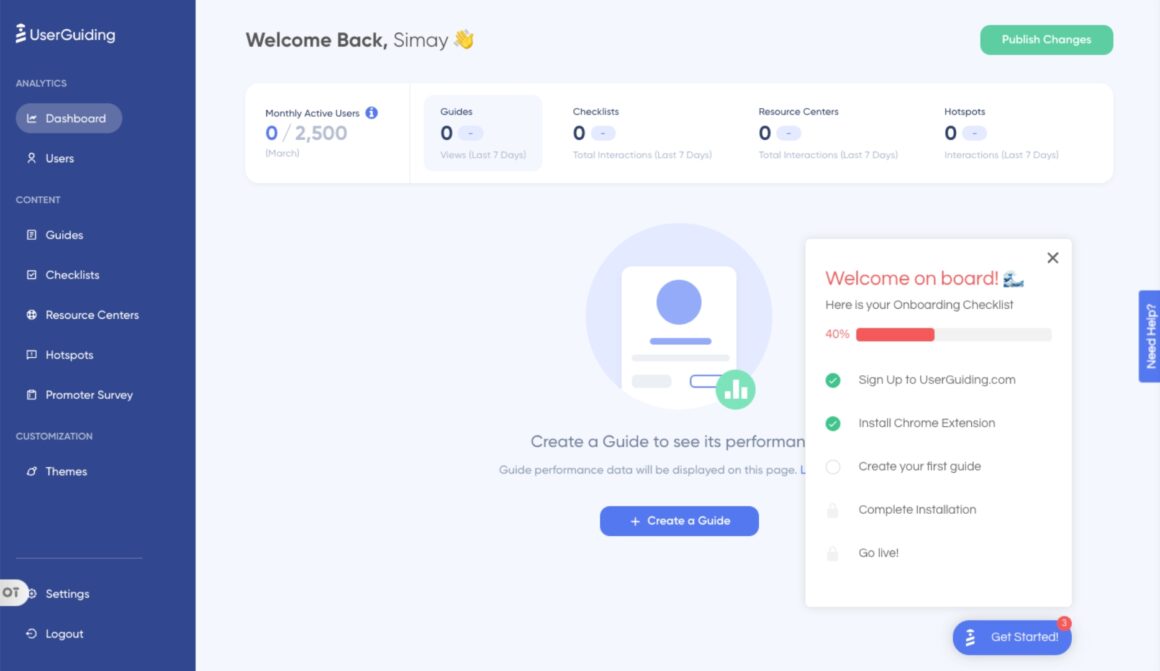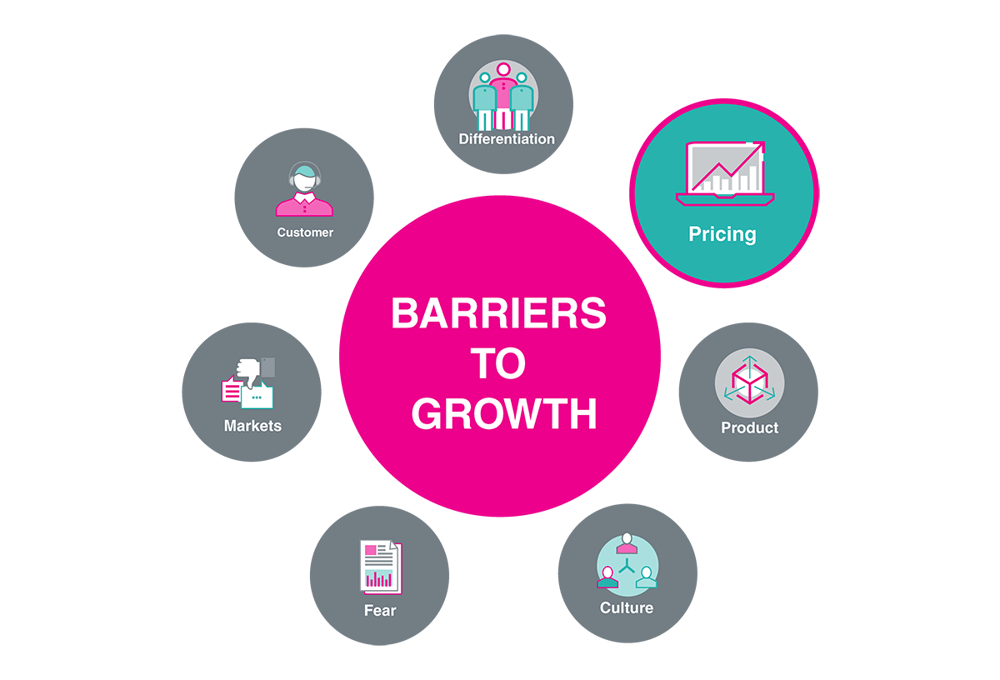Product Adoption Process: Showcasing the Value of Your Product
Did you know that every product in existence shares the same problem? They all struggle with getting customers to adopt. No matter how long they’ve been in the market, every company needs an effective product adoption process.
Imagine this: A product team has spent long hours developing a product, successfully attracting users to their sign-up campaign. Only to find after the product launch that customers are not using their product as much as they’d hoped.
Sounds familiar? Maybe because it has happened to you multiple times before.
Most users are more comfortable staying where they are rather than exploring new products. This is because they have grown comfortable with what their current subscription is offering.
Lucky for you, there are surefire ways to get customers to embrace your product and increase your product adoption.
But first, we need to understand what product adoption is and why it’s important.
Table of Contents
- What is product adoption?
- Why is product adoption process important?
- Product adoption and product analytics
- Stages of the product adoption process
- What influences the product adoption process?
- Strategies to boost the product adoption process
- #1. Understand your customers
- #2. Develop excellent products
- #3. Improve user onboarding experience
- #4. Make customer support more convenient
- #5. Boost user engagement
- #6. Refine product performance through feedback
- #7. Drive customer retention
- #8. Remove barriers to product success
- #9. Make continuous improvements through research
- Conclusion
- Machine Learning In Finance: 12 Essential Applications
- How To Create Interactive Compliance Training For Bank Employees
- How Fintech Apps Are Using Gamification To Increase User Engagement
- Top Gamification Companies for Employee & Customer Engagement
What is product adoption?
The product adoption process is making users aware of your new product, finding its value, and becoming long-term users. Although adoption is relatively simple, most companies have different views about it. Measuring product adoption depends on how you define it.
Some businesses consider product adoption when users download or subscribe to their products. Some wait until there’s an interaction before logging it as adoption. Others don’t even consider it adoption until after the users use it for some time.
No matter what your metrics are, understand that product adoption is the foundation of customer retention and loyalty. Once your users find value in your product, your goal must be to keep using it for a long time.
However, getting your customers to commit to your product can be challenging. It’s not just the new users you need to focus on. You must also consider your strategy to help existing users continuously find value in your product.
Why is product adoption process important?
The product adoption process is vital for all businesses. No matter your business type, you need your customers to embrace your product. The product adoption process leads to customer success and improves customer retention in the long run.
Once you gain users who love your product, you have a bigger chance of upselling and cross-selling. More customers will recommend your product, improving your Net Promoter Score (NPS). And you can switch your focus to business expansion and many more.
Product adoption and product analytics
Improving your product adoption means helping your users find your product’s full potential. To achieve that, you need to analyse digital engagement and user behaviour. You can understand your users and how they interact with your product through product analytics.
If you measure adoption through user conversion, you need to understand the behaviour of those already converted. What made them convert? What changes in your product lead them to subscribe?

Source: indicative
Additionally, you also need to analyse the behaviour of the users that quit using your product.
With the help of product analytics, you can visualise what adoption looks like for your product. In doing so, you can recognise the pattern that relates high product adoption with user behaviour.
Stages of the product adoption process
#1: Awareness
It goes without asking that for customers to adopt your product, they need sufficient knowledge about it. Letting your customers know what problems your product will solve is the first step of the product adoption process.
Here are some factors that create brand awareness:
- Complications – Any dissatisfaction they have with the current product they are using will drive them to search for another solution.
- Brand credibility – If your brand already has a good reputation, users are likelier to trust and try your product.
- Product uniqueness – It’s important to ensure your product offers something your competitors aren’t.
#2: Interest
After making your potential customers aware of what your product offers, it’s time to capture their interest. This stage in the product adoption process is where they gather information about how your product will help them achieve their personal goals.
To make your product attractive to your customers, ensure you have an excellent help centre and customer service. By answering their questions, your prospects will have all the information they need about your product.
#3: Evaluation
At this stage of the product adoption process, you need to fully understand your competition.
Customers will surely compare your products with their equivalents in the market. Make sure your brand will stand out for potential customers to choose it over anything else. Here are some factors that affect the customers’ decisions:
- Pricing
- Competitive value
- Recommendation
If your product is the most affordable, beneficial, and recommended, you have a bigger chance of winning over customers.
#4: Trial
It doesn’t matter if your product is free or not. There should always be a trial period. This is the stage of the product adoption process where your customer will get to experience your product. It will help them decide whether to use your product for a long time or opt for a different product.
This is your opportunity to prove that your product:
- Fits the needs of your users
- Helps the users achieve their personal goals and solve their problems
- It’s easy and fun to use
#5: Activation
After the product trial, customers don’t usually jump straight to long-term product adoption. Only after user activation will your users be convinced to be loyal to your product or brand.
User activation is when your users have finally experienced the value of your product. This a critical stage, so it must be fast-paced. Make sure that your new customers realize the benefit almost immediately.
#6: Adoption
After all the product adoption stages, you will finally come to the point where customers will adopt or reject your product. At this stage, customers will choose whether to leave or stay, so it’s critical to keep showing off your value.
However, remember that your effort to provide quality customer service does not end here. The product adoption process is continuously gathering feedback and developing your product accordingly.

Source: userpilot
What influences the product adoption process?
There may have been a time when you developed and launched a new product that customers quickly embraced. However, more often than not, products take slightly longer to obtain adoption.
To help your product gain acceptance quickly, here are the things that influence product adoption:
#1. Quality
High-quality products that effectively solve customer problem statement has a positive effect on product adoption. If a customer finds a similar product that offers more value to them, they are likely to switch. If your product has a competitive advantage, you can expect customers to choose you over your competitors.
#2. Compatibility
Compatibility measures whether your product matches your target customers’ needs and values. It also depends on whether your product is difficult or easy to understand. Products that are easy and fun to use have a smoother consumer adoption process than those that are too complex.
#3. Visibility
Make sure that your product is visible on pages your target audience is likely to see. This will create awareness and will get them excited about the launch.
#4. Pricing
Knowing the right pricing strategy for your product will give you an advantage over your competitors. It’s important to understand how to price your product competitively to increase the product adoption rate and unlock more growth opportunities.
Strategies to boost the product adoption process
#1. Understand your customers
Understanding your customers will ensure that the product you develop will meet their needs and expectations. Knowing your users will help you create copies, marketing campaigns, and landing pages to capture their attention. Knowing what your customers need and want is a huge part of the product adoption process.
#2. Develop excellent products
Developing products that have a competitive edge provides more value and will help boost product adoption. You can also offer a product that is better and fresh to the eyes of your customers. Offering something better than the product they already use will encourage them to switch to your product.

Source: productboard
If your product fails to meet customer expectations, adding new features may not always be the answer. Instead, you can try these strategies:
- Design upgrades that will help increase usage frequency – If your users are not using a certain feature frequently, you can make changes to make it more appealing. You can also decrease loading time to keep your user’s interest at a peak.
- Make upgrades that target new adoption – Listening to early adopters is the key factor of this strategy. Gather feedback and suggestions about what upgrades your customers would like to see in your product. Incorporate those upgrades, and you will effectively increase product adoption.
#3. Improve user onboarding experience
A successful user onboarding process is not just pointing out where your customers need to go. It should also help them visualize how they will benefit from your product and how to maximize their experience.
Every single one of your users has a goal in mind while using your product. Whether to save money, time, or effort, your objective must be to guide them towards their personal goals.
Improving user onboarding is an effective adoption strategy because users are likelier to keep using a product they understand. You can make onboarding fun as it is informative through gamification.
How to use gamification to improve the onboarding experience
Gamification is the process of incorporating game-like features into normal processes. You can boost customer motivation and engagement through a competitive and reward-based environment. Here are some gamification strategies to boost the user onboarding experience:
- Reward new users with badges and medals – Once a new user signs up, you can immediately reward them with a badge. You can also give them tasks to complete to gain more badges and collect more rewards. This strategy is called positive reinforcement. You motivate your users to move forward by offering them something in return.
- Assign a personalized avatar – You know when you’re playing a new game and you spend hours customizing your avatar? You can also use it to make the user onboarding experience as exhilarating as a video game. Not only will users enjoy the process, but they’ll also have a sense of ownership of what they have accomplished so far.
- Show progress bars – Design a progress bar that fills up as your users undergo the onboarding process. This will help them keep track of their progress and visualize what comes next. Giving them a visual representation of their experience will give them a sense of fulfilment and encourage them to keep going.
Here is an example of a gamified onboarding dashboard. It shows a checklist and a progress bar to keep new users on track with their onboarding process.

Source: userguiding
#4. Make customer support more convenient
Customer support serves a bigger purpose than helping users sort out their problems. They also help retain customers and provide more value for your product and brand. Excellent customer support can help your business gain loyal customers that recommend your product and provide positive reviews.
If your customers are not getting the support they need when they need them, chances are they will find alternatives.
The best way to improve a new product adoption process is to make customer support more convenient. Keep it simple and hassle-free. The key is to keep everything your users will need inside the app. Hence they leave and don’t come back.
You can make your customer support more convenient through:
- Demo videos – You can add short videos within your app to guide users through common difficulties.
- In-app chat – Provide accessible chat support so users can ask questions easily. This will help solve their problems without having to get on the phone and call customer service.
- Chatbots – There may be a time when your support team is not readily available to chat or call with the customer. When this happens, you can use chatbots to answer support questions instead.
- Informative content – Ensure you post informative articles on your website that tackle frequently asked questions by your users.
Providing all the help your customers might need will give them a sense of security in your product. This will encourage them to keep using your product for a long time
#5. Boost user engagement
According to a recent study, 95% of customers choose a business that offers help and engages with them throughout their journey as a customer. This means that engagement is a deciding factor for whether or not users will choose your product over your competition.
You can engage with your users through personalized email, social media, or follow-up customer feedback.
#6. Refine product performance through feedback
Gathering user feedback is an effective way of determining whether or not your product meets customer expectations. Ask straightforward and specific questions to collect quality feedback that can benefit your product adoption process.
#7. Drive customer retention
Product adoption is an ongoing process. It doesn’t end when new users sign up or complete the onboarding process. Once your customers realize your product’s value, your next objective is to encourage them to use it.
You can drive retention by:
- Consistently reminding customers of your product’s value – You can do this by sharing content to their email. You can also design in-app pop-ups to notify them of updates and how they can maximize their experience with you.
- Segment users – By segmenting your users, you can differentiate existing customers from new ones and power users from occasional ones. Through this, you can create content specific to each segment. That way, you can bring more value to your users and create personalised content for them.
- Monitor customer logins – It’s important to determine if your users log in less frequently than they normally do. You can take it as a warning signal that user engagement is low and customer retention rates are at risk.
#8. Remove barriers to product success
Product adoption is a direct result of product success. Your customers will embrace your product only after they found its value and are continuously meeting their expectations.

Source: themarketingcentre
Here’s how you can apply this product adoption strategy:
- Eliminate customer risk – Customers find it risky to subscribe to a product without trying it first. You can eliminate this risk for them by providing free trials and a money-back guarantee. This could also be an opportunity for them to experience the real value of your product.
- Make sure that your product is mobile-friendly – Most users prefer to use their phones for the majority of their day. By designing a mobile-friendly product, you can provide a hassle-free service they can use anytime, anywhere.
#9. Make continuous improvements through research
An ongoing product adoption process is equivalent to never being satisfied and making a continuous discovery. Constantly improving your product will give you more chances to boost user experience and adoption.
You can conduct customer research to gather insight regularly to help with product development. Some companies install feedback widgets on their website to make it easier for users to rate certain features. This will help them determine what their users love and hate most about their product.
Sending out churn surveys can also help discover what made your previous users switch to other products. Through this feedback, you can make changes to retain your existing users.
Conclusion
Now that you know everything about the product adoption process, it’s time to apply the strategies mentioned above. Understanding customer behaviour and developing products that meet their needs are the first steps in getting them to adopt. It’s a long process but the results are worth the trouble.
All in all, product adoption is knowing your customer’s needs and meeting them in every stage of the customer lifecycle. Make sure to cater to your customer’s needs to ensure your product’s success.
To make your digital product more engaging and interactive, check out our gamification solutions at Mambo. Speak with our experts today!
Download your free
“Gamification Guide”
Get your PDF now and start transforming your approach to digital engagement!
Latest Posts
Machine Learning In Finance: 12 Essential Applications
The impact of machine learning on finance is significant. Thanks to this technology, financial institutions are now equipped to make efficient decisions. Through the analysis of data sets, machine learning […]
How To Create Interactive Compliance Training For Bank Employees
Banking compliance training isn’t just another task. It’s the stage where everything else performs. Banks must navigate a myriad of regulations and laws. After all, this is a trust-driven, high-stakes […]
How Fintech Apps Are Using Gamification To Increase User Engagement
Discover how gamification in fintech is revolutionizing financial engagement, making banking fun & boosting user loyalty.





